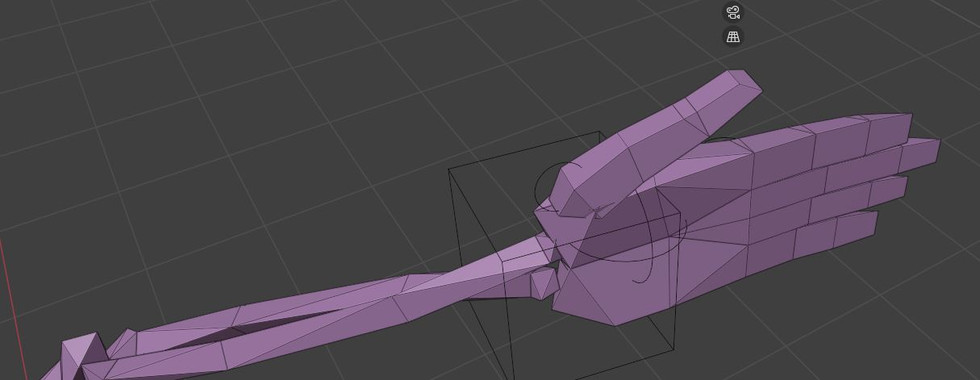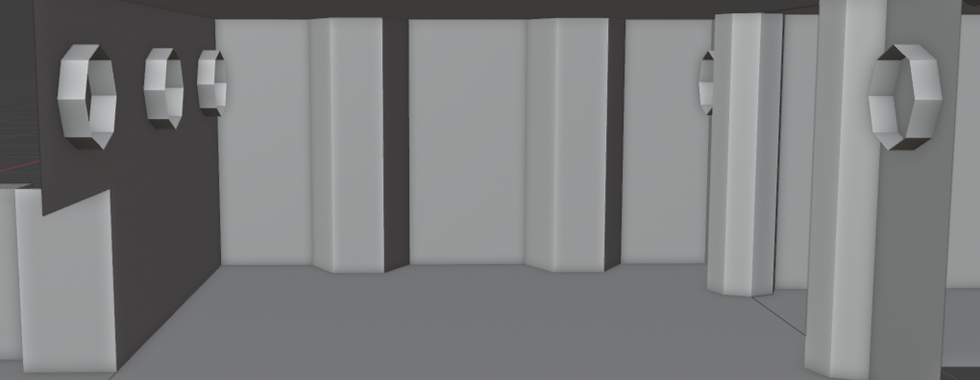Bonehead (In Development)
- Solomon Dale
- Oct 2, 2024
- 4 min read
Updated: Nov 14, 2024

In Game Studio, around 30 students and I were to create a pitch for an original game idea. The teachers would select the five-six of them they thought were most interesting, and create groups that would take the initial concepts and create a playable demo.
I pitched an idea where the player would control a skeleton in a hack-and-slash style game, where among other mechanics, they would be able to throw their heads at enemies to take their bodies. The best parts of this pitch were selected for, and I was put into a group that would develop "Bonehead." We wanted to make a classic, punk-style, side-scroller beat-'em-up, drawing inspiration from games such as Streets of Rage, River City Girls and Sifu. Our team consisted of five people the first semester, only two of which were programmers. We lost our audio person in the second semester, but gained two programmers and two concept artists, alleviating some pressure for the rest.
My Role
My main role was as the 3D character modeler, UV mapper and rigger. I would receive concept art and turn it into game-ready assets. While waiting for characters to model, I was also tasked to create additional environment assets, as well as provide placeholder animations and audio.
Art Corner
Before production began, the whole team iterated on a few art styles, creating art corners to see what would be suitable for the desired feel of the game. In our first iteration, we based our looks on what we knew. I went with a PBR-style scene, which received good feedback, although it wasn't quite the style we were looking for.

For my second attempt, I created a grungy toon-punk scene with garish colors and harsh highlights. This was closer to what we wanted, and would further guide the direction we were aiming for.

The Player
The first iteration of the player character was based on concept art provided by the team lead, who also modeled the skull used. Before receiving the concept, I had started by creating a base skeleton based on anatomical pictures, which would be used for the rest of the project.
We were later directed to make the character more "punky," so I free-handed new accessories for the base skeleton with a more suitable look.

The Enemies
We looked at a few enemy designs during the process, but found that with the time and resources we had, we'd only have time to program and implement one type.
Our new character concept artist provided me a design, which we felt happy with when it was finished.
The Boss
For the end of the level, we wanted a memorable boss for the player to fight. We wanted a big, hulking skeleton man, which the team lead gave me a turnaround to model.
Rigging
At the start of the project, I was assigned as 3D Character Artist and Animator. To make the animation flow comfortable, I created a custom IK rig for the characters, which I'd be able to customize and adjust to each of the characters in the project. Not only would it make the animation process quick and intuitive, it had elements made for skeletons, such as extra bones that would allow the Ulna and Radius to realistically fold over each other when rotating the hand, like in real life.
Unfortunately, due to time restrictions, we weren't able to use and animate the rig I created, and opted to stick with the placeholder Mixamo rig and animations I set up instead.
The Environment
Although we had a dedicated environment artist, I was also tasked to create assets for the game scene. I also worked with the environment artist to create an asset list, which we used to delegate work between us.
We wanted various debris to be scattered across the level to add to the grunginess. Since it was dungeon and punk-themed, I created piles of bones and torn up posters. The bonepiles were quick and easy to make, as I could just disassemble the base skeleton the player uses.

To get a decent variation of poster tears, I created a Geometry Nodes setup which would create a customizable base mesh, and tear and create a pile based on its size.
We felt like the level didn't have so I created some fences which would be easy to see through, while maintaining the sense of depth and style we're going for.

Near the end of first semester, we were set to have a finished level designed to show our gameplay. Designing and furnishing the level was mainly the environment artists' job, but as he was busy modeling assets, I volunteered to graybox a series of rooms. These were made so the level designer would be able to mix and match the rooms by his own will.
Tools Used:
Blender - Modeling, Rigging, Rendering
Unity - Game Engine, Asset Implementation
This Project Was Done in Collaboration With:
Mitchell Brunckhorst - Programmer
Jojo Corae Henriquez - Character Concept Artist
Zev Donovan - Project Lead, 2D Artist, Programmer, Animator, Trailer Editor
Mollie Hancock - Environment Concept Artist
Nick Mansweto - Audio Manager, Shader Design
Raven Morzik - UI Sound Designer
Long Nguyen - Programmer
Alexei Shortis - Programmer
Tyler Stow - 3D Environment Artist, Level Designer












































Comments